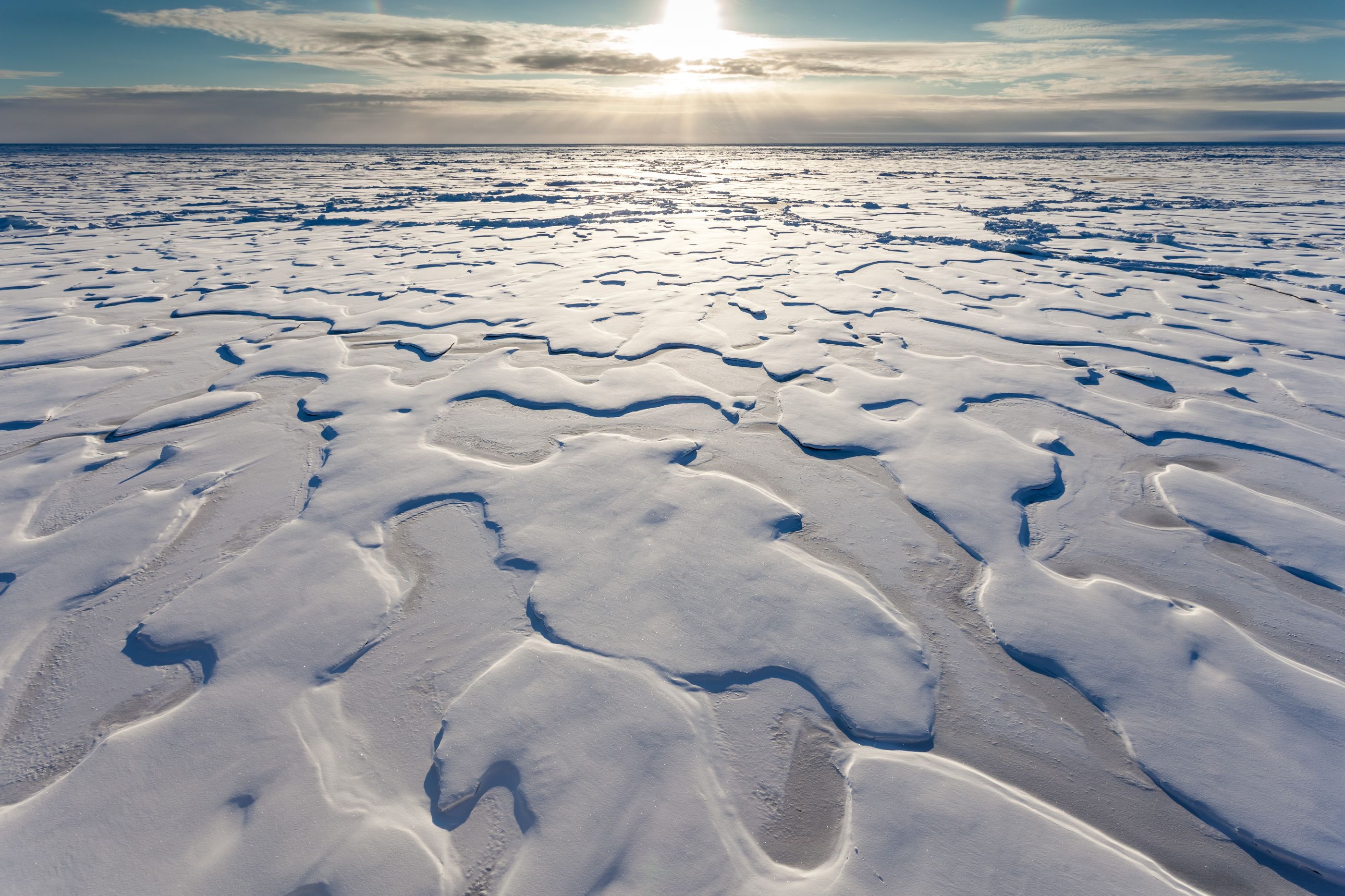
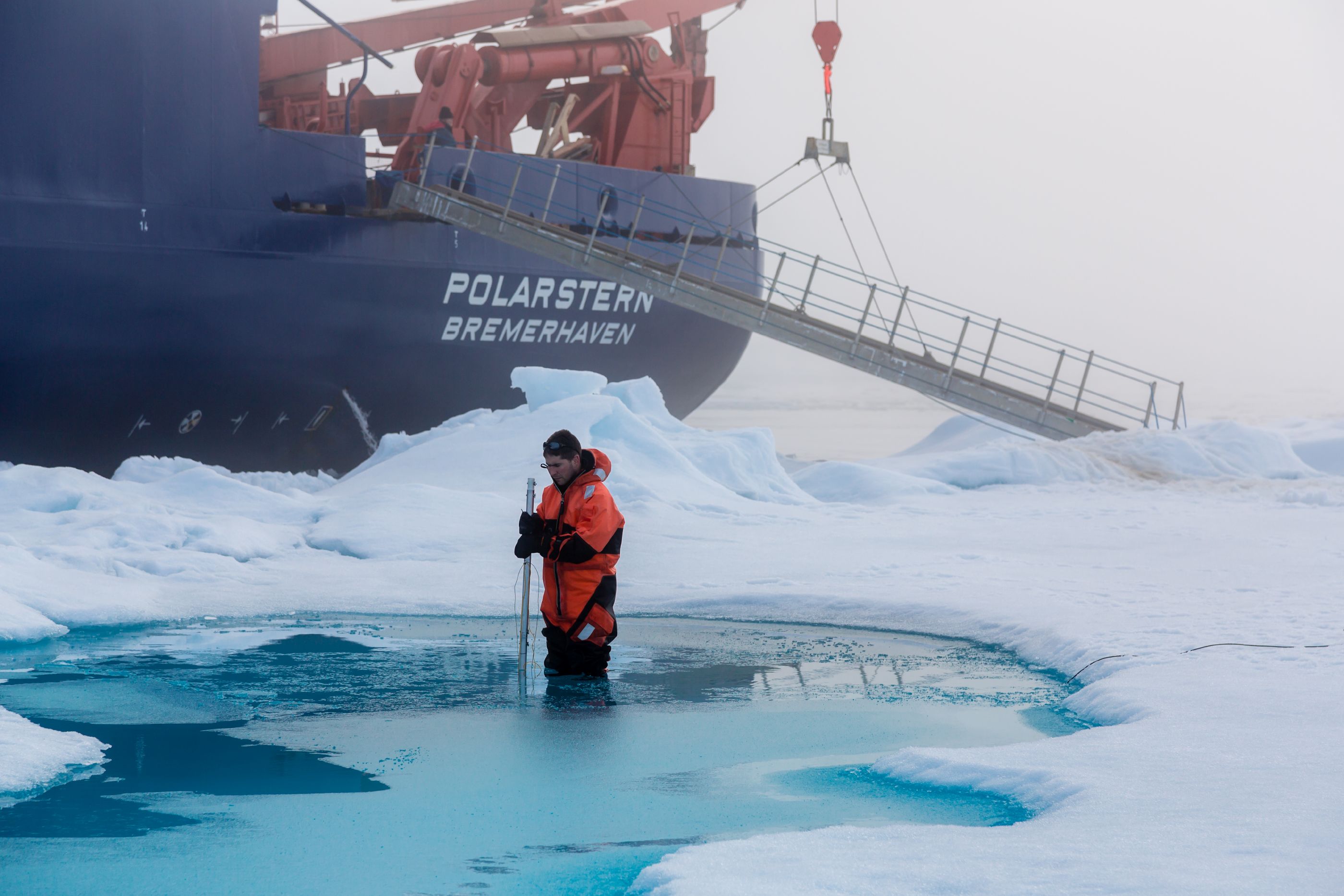
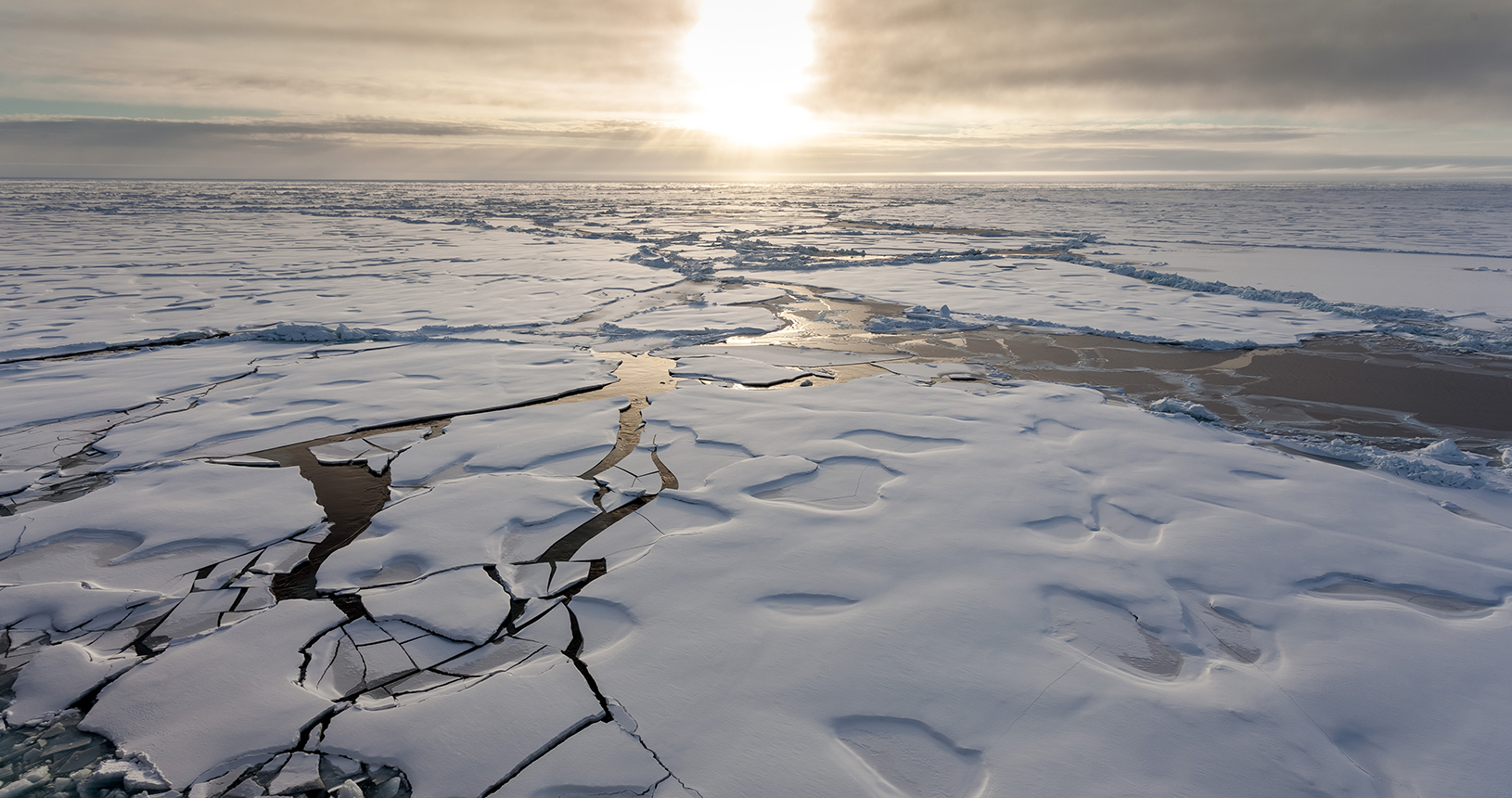

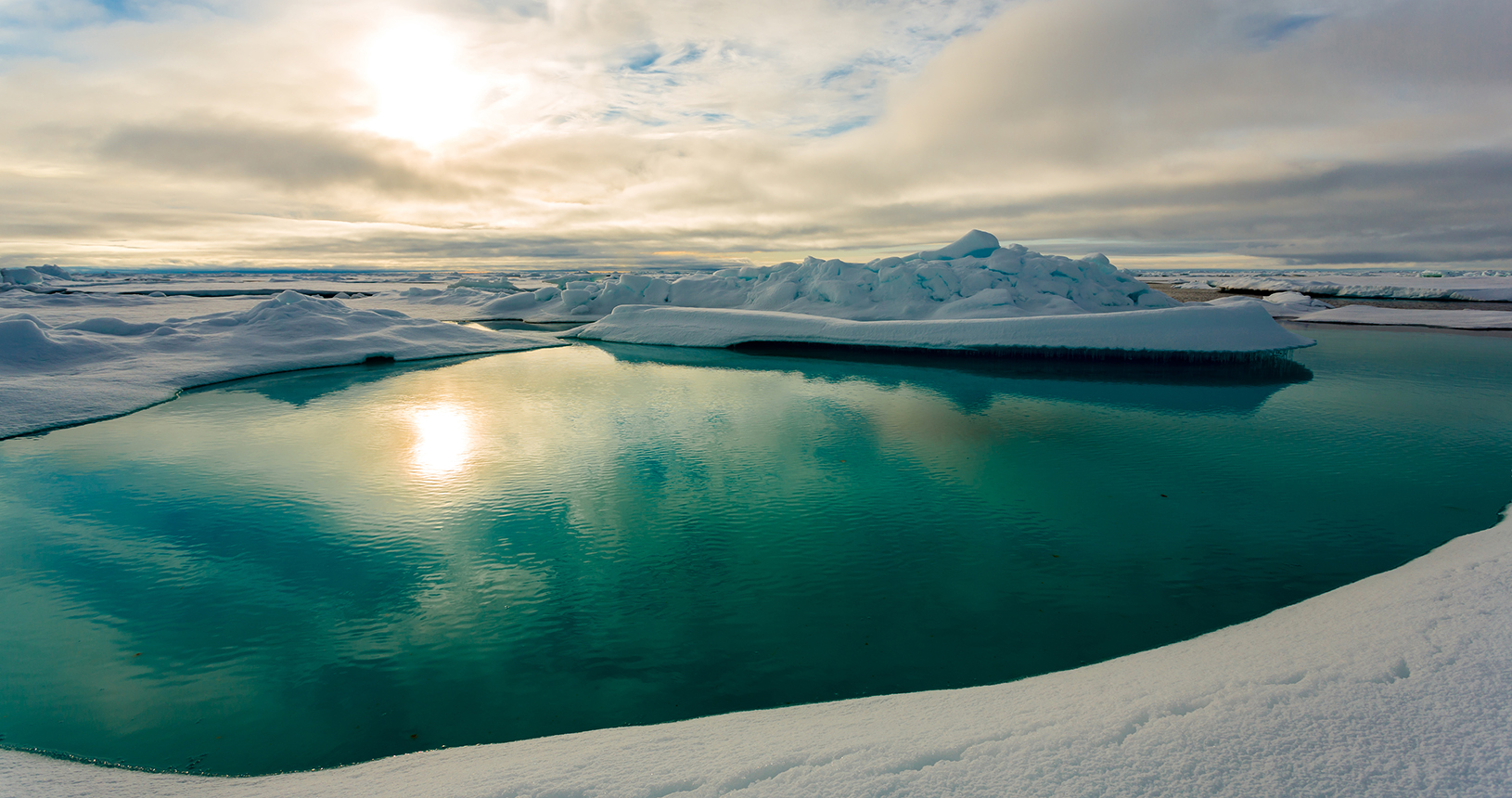


Sea ice is a central element of the Arctic climate and ecosystem - and it will be one of the central research foci of MOSAiC. The MOSAiC experts seek to develop a better understanding of the complex processes governing the formation and deformation of sea ice: sea ice does not simply freeze on the surface but in water columns where ice particles float up and form small ice floes. Other research objectives include developing a better understanding of the formation of leads, and of the transport and uptake of heat between the sea-ice surface and bottom through changes in surface characteristics such as surface albedo, snow, and melt ponds.
Read more about the research focus SEA ICE

How is sea ice evolving? Finding answers to this question is one of the central research objectives of MOSAiC. To this end, the expedition’s oceanographers will, for instance, focus on ocean circulation in the upper water layers, but also on the deep sea and its currents: What happens, for instance, when heat from deeper ocean layers flows upward?
Read more about the research focus OCEAN

A major part of the complex measurements taken during MOSAiC will focus on the atmosphere, covering its entire range, right from the ice’s surface to the upper reaches of the stratosphere in 35 kilometres altitude. An intense exploration of the clouds, precipitation, and aerosols in the Arctic will help to pursue one of the key objectives of MOSAiC: to gain a better understanding of the interactions between the atmosphere, the sea ice, and the ocean.
Read more about the research focus ATMOSPHERE

Compared to the frosty Arctic air, the Arctic Ocean is almost warm - owing to the fact that it is covered by a very thin eggshell-like layer of sea ice about 2 metres thick which insulates the ocean from the cold atmosphere. However, when the ice cracks open, the warmer ocean surface comes into contact with the freezing atmosphere, as well as the chilly sea-ice surface, with temperatures ranging between -30 and -40 degrees Celsius, generating enormous upward currents. Like in a cooking pot, the air shoots upwards, absorbs the moisture and heat from the ocean, and carries it way up into the atmosphere.
But what exactly happens there and how much energy is released into the atmosphere, is still quite a mystery. And MOSAiC’s experts will set out to solve it.
Read more about the research focus ATMOSPHERE

The Arctic seems hostile to life, but in fact, there are many species populating the Arctic ice and ocean. What remains largely a mystery, though, is how they do survive under a closed snow cover, especially in the months-long darkness of the polar night. In spring, when the ice breaks open, the sun returns and there is open water again, Arctic life virtually explodes. The water turns green with algae. With nutrients having multiplied during winter unchecked by any organisms, the ensuing algae bloom present a veritable feast for the now thriving zooplankton, krill, and microorganisms. They graze the algae and thus establish a new life cycle.
So, some organisms seem to be capable of surviving even the hostile conditions of the Arctic winter. What remains unclear, however, is how their metabolism functions, what percentage of their population survive at all or whether these organisms use the little remaining light, maybe even from the moon, to do photosynthesis.
Learn more about the research questions of the MOSAiC team ECOSYSTEM

The ecosystem in the Arctic constantly releases hundreds of chemical substances - such as methane - into the atmosphere. This constant exchange of gases between ocean and atmosphere is highly complex and of great significance for the Arctic climate - and beyond. This is why BGC is another key focus of MOSAiC.
Read more about the research focus BIOGEOCHEMISTRY
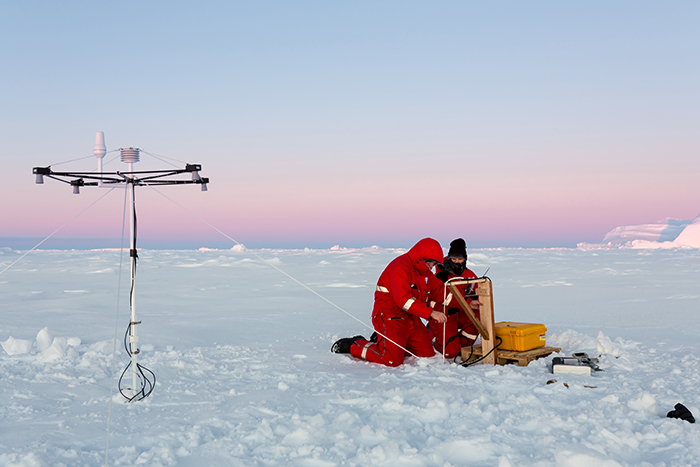
The release of gases from the Arctic ecosystem contributes to the highly complex composition of the air chemistry in the Central Arctic. As one of the consequences of this process, aerosol forms, significantly affecting the properties of clouds as well as the radiation etc. in the Arctic climate system.

MOSAiC experts will study the dynamical coupling via atmospheric waves with the ozone layer above and the changes in the ozone layer which are the result of anthropogenic activity.
Learn more about the research focus ATMOSPHERE